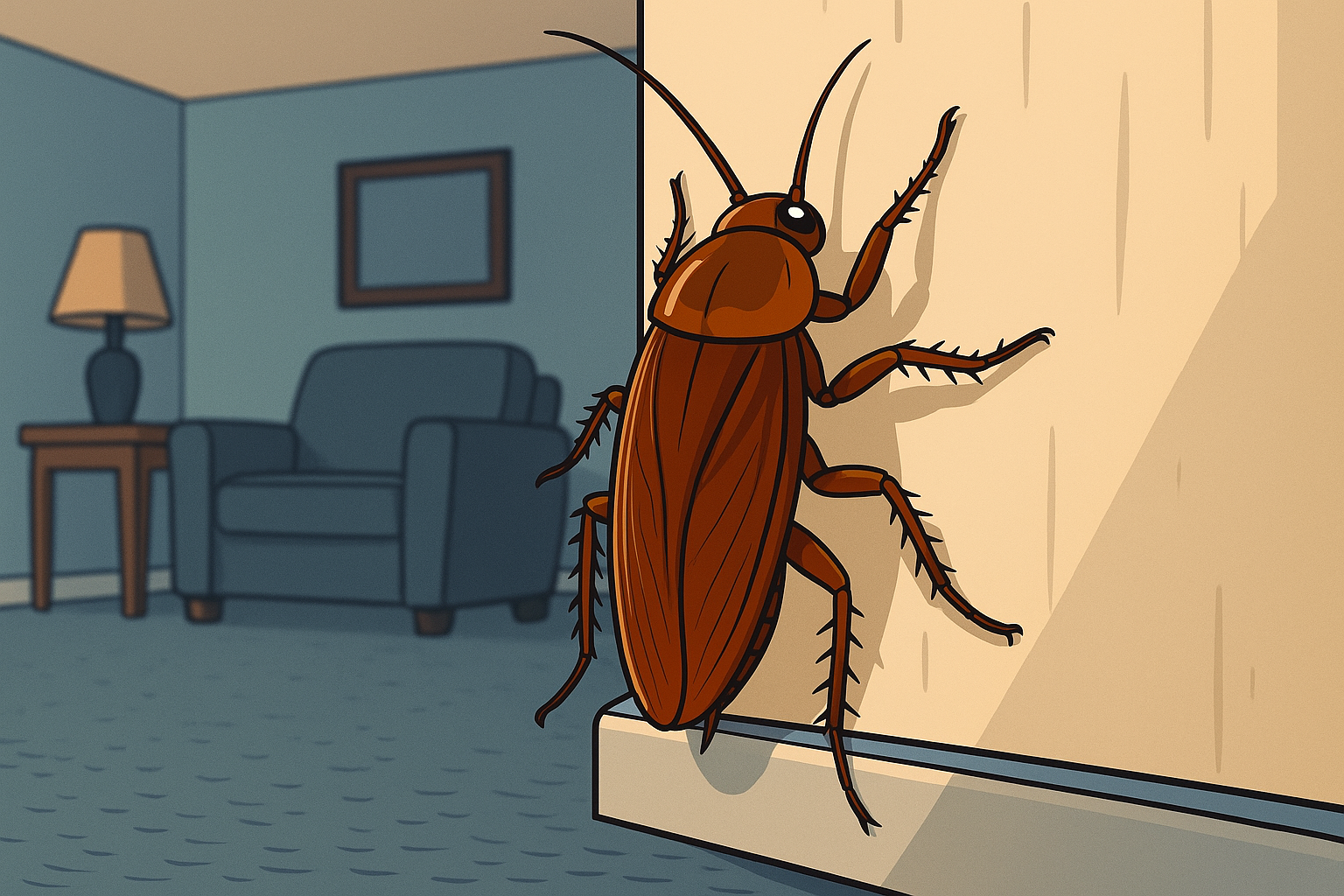If you’ve ever walked into your kitchen late at night only to find a cockroach scaling the wall or, worse, hanging out on the ceiling, you’re not alone. Roaches have an uncanny ability to show up where you least expect them. But can roaches really climb walls, or is it just a creepy illusion? Let’s dive into the facts and uncover the truth about these highly adaptable pests.
Can Roaches Climb Walls?
Yes, roaches can climb walls. In fact, many cockroach species are well-equipped to scale vertical surfaces, including walls, cabinets, and even ceilings. This ability comes from the special structures on their legs that allow them to grip surfaces both smooth and rough.
If you’re seeing roaches on the walls, it’s not your imagination. They’re using their natural abilities to explore, hide, and hunt for food. The bad news? If they’re climbing your walls, there’s a good chance there are more hiding nearby.
How Do Roaches Climb Vertical Surfaces?
Roaches aren’t supernatural, but their climbing skills are rooted in some impressive biology. Their legs are designed to handle various surfaces with ease. Each leg has tiny claws and pads called arolium that act like suction cups, helping them stick to even the slickest walls.
They also have hair-like structures known as setae, which create friction and allow for precise movements. This combination of anatomy gives them the grip and agility to defy gravity with shocking ease.
So when you see a roach scuttling up your wall, it’s not magic — it’s science.
Types of Surfaces Roaches Can Climb
Roaches are surprisingly versatile climbers, but some surfaces are easier for them than others. Here’s a breakdown:
Easy to Climb:
- Painted drywall
- Wood
- Fabric and wallpaper
- Concrete or brick
More Challenging (but not impossible):
- Glass
- Glossy tiles
- Polished metal
Some roach species can handle smooth surfaces better than others. You might notice one sticking to your mirror while another avoids the tile altogether.
Which Roach Species Are the Best Climbers?
Not all cockroaches climb with the same skill. Some species are natural-born wall-walkers, while others struggle with certain surfaces. Here are a few common types:
- German Cockroaches: Masters of climbing. They can easily scale both rough and smooth surfaces.
- American Cockroaches: Also good climbers, often found in warm, humid environments.
- Oriental Cockroaches: Weaker climbers. They prefer the ground and struggle with slick vertical surfaces.
Understanding the species in your home can help determine how they’re getting around — and how to stop them.
Why You Might Be Seeing Roaches on Walls or Ceilings
Seeing roaches crawling high up on walls or even upside down on ceilings can be unsettling. But why do they do it?
- Searching for food or water: Roaches are scavengers and will go wherever the scent leads them.
- Avoiding threats: Higher ground offers safety from predators and human interference.
- Following heat or airflow: Warmth and air movement from vents can attract them.
- Looking for shelter: Wall cracks, cabinet tops, and ceiling corners offer perfect hiding spots.
If they’re climbing frequently, it’s often a sign that the infestation is growing and they’re running out of space.
How to Keep Roaches from Climbing Your Walls
Stopping roaches from scaling your surfaces starts with understanding their behavior and blocking their paths. Here’s how:
Home Sealing & Maintenance
- Seal cracks around windows, doors, and baseboards
- Install door sweeps and weather stripping
- Fix leaky pipes and faucets to reduce moisture
Cleanliness & Food Storage
- Wipe down kitchen counters and floors daily
- Store dry goods in airtight containers
- Don’t leave dirty dishes overnight
- Empty garbage bins regularly
Use of Repellents & Traps
- Apply gel baits or boric acid along baseboards and entry points
- Place sticky traps near vertical surfaces
- Use insect growth regulators (IGRs) to disrupt their lifecycle
Being proactive is key. A clean, sealed environment is your best defense against these climbers.
When to Call Pest Control
Sometimes, home remedies just aren’t enough. If you notice these signs, it may be time to bring in the professionals:
- Daytime sightings (roaches are nocturnal, so daytime activity signals a large infestation)
- Droppings or egg casings on walls, cabinets, or shelves
- A persistent musty odor in the home
- Allergic reactions or asthma symptoms triggered by roach allergens
Professional pest control can provide targeted treatments that reach deep into walls, drains, and hidden nesting areas.
Conclusion
So, can roaches climb walls? The answer is a definitive yes — and it’s one of the many reasons they’re such persistent pests. Their climbing abilities allow them to access almost every corner of your home, from baseboards to ceilings.
Understanding their behavior is the first step to keeping them out. Whether you’re dealing with a few stragglers or a full-blown infestation, cleanliness, sealing entry points, and using proper pest control methods can make all the difference.
Remember, the sooner you take action, the easier it will be to get your home back to being roach-free. Because no one wants to sleep under a ceiling that might have uninvited guests hanging around.
FAQs
Can roaches climb walls and ceilings?
Yes. Most cockroach species can climb both walls and ceilings thanks to specialized claws and pads on their legs.
Why are roaches climbing my walls at night?
Roaches are nocturnal and become active at night in search of food, water, or shelter. Walls and ceilings are just part of their route.
Do all cockroach species climb equally well?
No. German and American roaches are excellent climbers, while Oriental roaches struggle on smooth surfaces.
Can roaches fall off ceilings or walls?
Yes, especially when startled or if the surface is too smooth or slippery for their feet.
How do I keep roaches from climbing into my bed?
Keep your bed away from walls, don’t allow bedding to touch the floor, and ensure your room is clean and sealed. Using traps and repellents can also help.









